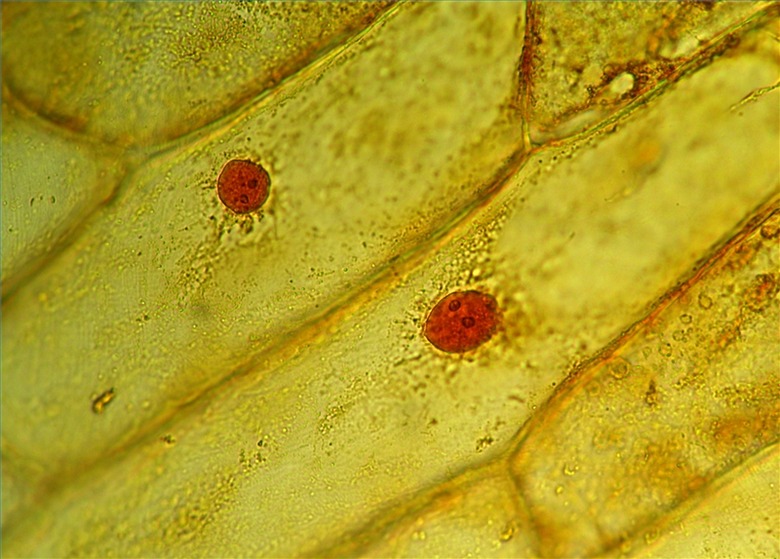How To Make A Simple Microscope
Microscopes are scientific instruments that allow you to see details too small for the human eye to notice; though they come in sizes big and small, very simple or incredibly complex, all microscopes allow you to examine the smaller components of your world. Whether you're looking at the pattern of a fly's wings, the plant cells in an onion's skin or examining a water sample for the tiniest atoms, microscopes allow you to magnify imagines through the process of light refraction. If you'd like to explore how microscopes work and can be used, it's easy to build your own microscope at home from everyday materials – a few drops of water will function as a lens and complete the device.
TL;DR (Too Long; Didn't Read)
Though you may think of them as complex devices, all microscopes regardless of size or power operate by refracting light through one or more lenses. Because light bends when it moves through a transparent material – like glass or plastic – you can use drops of water as the lens in a simple homemade microscope, allowing you to magnify images and examine objects in close detail.
Water Microscope Basics
Water Microscope
Basics
A beam of light moves in a straight line unless it's obstructed by something, at which point it either stops or bends depending on what it hits. If light hits a transparent material, like glass or clear plastic, it bends a little as it enters – and depending on how that material is shaped, it bends again as it finishes passing through. When you look through the transparent material, objects on the other side can look either bigger or smaller (depending on how the material is shaped); this is called refraction, and all microscopes operate by using it. The simplest type of microscope you can build at home, a water microscope, uses droplets of water – which naturally curve – as a magnifying lens.
Building Basic Microscopes
Building Basic
Microscopes
Water microscopes can be built quickly. If you use a pair of pliers to bend a paperclip into a straight line, and make a small circle of a loop at one end, you've made something similar to the earliest forms of microscopes – and something that can be used as a very basic magnifying glass. Rub the loop end of the paperclip in lip balm or petroleum jelly, and then use a dropper to place a few drops of water over the hole. Looking through the water, you'll be able to magnify an image: Try using it to read small newspaper print.
Advanced Water Microscopes
Advanced Water
Microscopes
A more complex version of this microscope can be constructed using a thin piece of cardstock and some other materials – along with a flashlight. Using a hole punch, put a quarter-inch hole in the card, and then cut and glue a piece of aluminum foil over the hole. Next, use a needle to poke through the foil and make a round, smooth hole. If you spread a thin layer of petroleum jelly around the hole on both sides, then squeeze a few drops of filtered water over it, the jelly should hold the water in place inside the hole. If you take a flashlight and point it up, and then place an object over the light, you can use the cardstock microscope to examine the object in greater detail – and change the way it looks by moving the card up and down. Once you've seen what you can do with this water microscope, you can experiment with more designs: Adjustable microscopes can be built with matchboxes, and compound water microscopes can be made by combining cardstock microscopes and a second water-drop lens made from a small paper cup. It's fun to see which microscopes work best when looking at salt, hair, bugs and more.
Cite This Article
MLA
Flournoy, Blake. "How To Make A Simple Microscope" sciencing.com, https://www.sciencing.com/make-simple-microscope-5459723/. 24 August 2018.
APA
Flournoy, Blake. (2018, August 24). How To Make A Simple Microscope. sciencing.com. Retrieved from https://www.sciencing.com/make-simple-microscope-5459723/
Chicago
Flournoy, Blake. How To Make A Simple Microscope last modified March 24, 2022. https://www.sciencing.com/make-simple-microscope-5459723/
